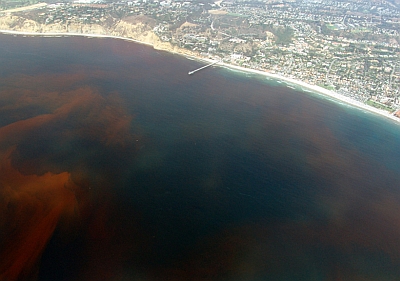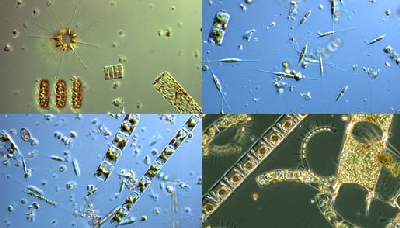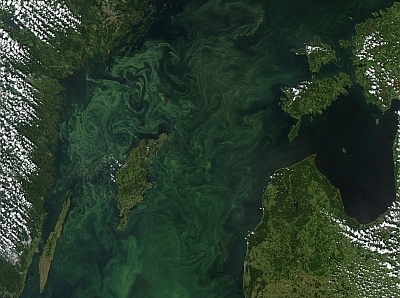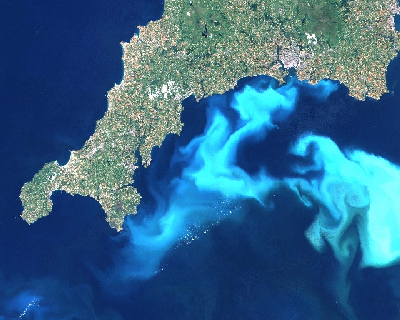3. Eutrophication & Health (4/5)
Algae that form Harmful Algal Blooms (HABs)
Flagellates (includes dinoflagellates), diatoms, blue-green algae, and coccolithophores. Their concentration can have large variations: A bloom can be made up of 200 or 2 million algal cells per litre of sea water. It could even be an increased concentration of algal cells that are attached to the substrate, like a blade of seagrass or a piece of seaweed.
1. Flagellates / Dinoflagellates
Flagellates are single-celled organisms that usually have organic walls. They move about with whip-like appendages and can move up and down in the water column covering up to 15-20 meters in a day.
Dinoflagellates make up approximately 70% of all HAB species. They can bloom in concentrations of more than a million cells per millilitre. Many of these organisms contain coloured pigments that cause the water to appear coloured when these organisms bloom, leading to the terms "red tide" or "brown tide," for example. However there are some dinoflagellate species that are colourless.

Photo: Alejandro Díaz / Wikimedia Commons
2. Diatoms
Diatoms are unicellular algae but they also occur attached in chains. Their cell walls are composed of silica, a glass-like material, which comprises a shell-like structure. Diatoms can float at the water's surface or sink to the depths of the ocean.
3. Blue-green algae
Blue-green algae (also called Cyanobacteria) are among the oldest types of bacteria found on Earth and are believed to have played a major role in the addition of oxygen to the Earth's early atmosphere. Up until today they are a significant component of the marine nitrogen cycle.
Cyanobacteria still have plant pigments like other algae but do not have the internal microstructure like that of the diatoms and flagellates. Individual cells, filaments, or colonies often float at the sea surface and generally appear blue-green in color.
4. Coccolithophores
Coccolithophores are single-celled algae covered with calcium carbonate plates called coccoliths. The coccoliths give the ocean a milky white or turquoise appearance during intense blooms. The long-term flux of coccoliths to the ocean floor is the main process responsible for the formation of chalk and limestone.



